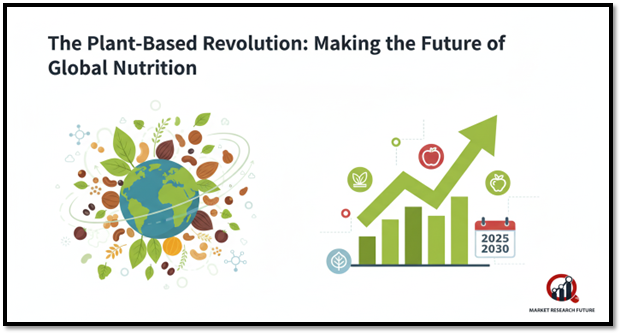The Plant-Based Revolution: Making the Future of Global Nutrition

Introduction
Eating habits have changed a lot in the last few years, and now plants are the main focus of the plate. In the past, this way of life was only for a small group of people, but now it is a powerful global movement that affects everything from restaurant menus to supermarket shelves. A plant-based diet is more than just not eating meat; it's a choice for health, the environment, and living in an ethical way.
Plant-based foods have become a symbol of balance in today's health-conscious society because they provide nutrition that is good for both people and the planet. People are more aware than ever of how the foods they eat affect their health and the health of the environment in the long run. This has led to a new era of innovation and variety in the plant-based food market.
The New Standard for Health: Plant-Based Nutrition
Plant-based diets are becoming more and more popular as people choose foods that are more natural and full of important nutrients. These diets are mostly made up of fruits, vegetables, grains, legumes, nuts, and seeds, which are all full of vitamins, minerals, fiber, and antioxidants that are good for your health.
Eating plant-based foods on a regular basis has been linked to better heart health, better digestion, and more energy. Antioxidants protect against oxidative stress and inflammation, while fiber keeps the gut healthy. Plant-based diets also naturally have less saturated fat and cholesterol, which makes them a great choice for people who want to keep their weight in check and lower their risk of getting long-term diseases.
The Growth of Mindful Spending
People today don't just eat for taste; they eat for a reason. People's buying habits have changed because they are now more aware of climate change, ethical sourcing, and animal welfare. People are now looking for food that fits with their values, which is why plant-based alternatives are becoming more popular.
The variety in this market has grown a lot, from meat substitutes and dairy-free milk to ready-to-eat meals and snacks made from plants. Supermarkets now have whole aisles full of vegan and vegetarian foods, and cafés and restaurants are proud to show off their plant-based menus.
This change in how people eat also shows that people are learning more about sustainability. Plant-based foods use fewer natural resources, cause less greenhouse gas emissions, and make better use of land and water. As people become more aware of the environment, the connection between their health and the health of the planet becomes clearer.
New Ideas and Growth in the Plant-Based Food Business
The plant-based food industry has come a long way since it first started. It is now an ecosystem driven by new ideas that combines science, technology, and cooking creativity. Food companies are using cutting-edge research to recreate the taste, texture, and nutritional value of traditional animal products without lowering quality or ethics.
Top brands are trying out new protein sources that come from peas, chickpeas, lentils, and even algae. These ingredients are good for the environment and are high in amino acids and other important nutrients. Companies are also making fortified foods with extra calcium, vitamin B12, and omega-3s to make sure that people who eat plant-based foods get all the nutrients they need without any trouble.
Product development is also moving toward new flavors. People used to think that plant-based foods were bland or limited, but that idea is quickly fading. Brands are making plant-based foods more appealing and easier to find than ever before. For example, they are making plant-based yogurts with tropical flavors and savory meat alternatives that feel like real meat.
Problems and the Path Forward
The plant-based food industry is doing well, but it still has some problems to deal with. Pricing is still a problem, especially in developing areas where affordability is still the main factor that affects how people shop. Brands are always trying to improve the taste and texture of their products so that they are as good as or better than animal-based ones.
You also need to pay attention to the consistency of the supply chain, how ingredients are sourced, and the rules around labeling. As the market grows, being open will become more important. People want to know where their food comes from, how it's made, and what effect it has.
Final Thoughts
The rise of plant-based foods is more than just a market trend; it's a cultural change that will change the way we eat in the future. What began as a movement for health has turned into a worldwide pledge to ethics, health, and the environment.
Plant-based foods have changed what it means to eat well. They include colorful salads, meatless burgers, oat lattes, and vegan desserts. Companies will probably keep coming up with new ideas in the next few years as they try to make these products cheaper, tastier, and easier for everyone to get.
The plant-based food market isn't just about finding new foods to eat; it's also about finding new ways to feed ourselves and the planet. The journey toward a food system that is better for the environment and our health has already begun. It will change the way we think about what it means to live well and what we eat.